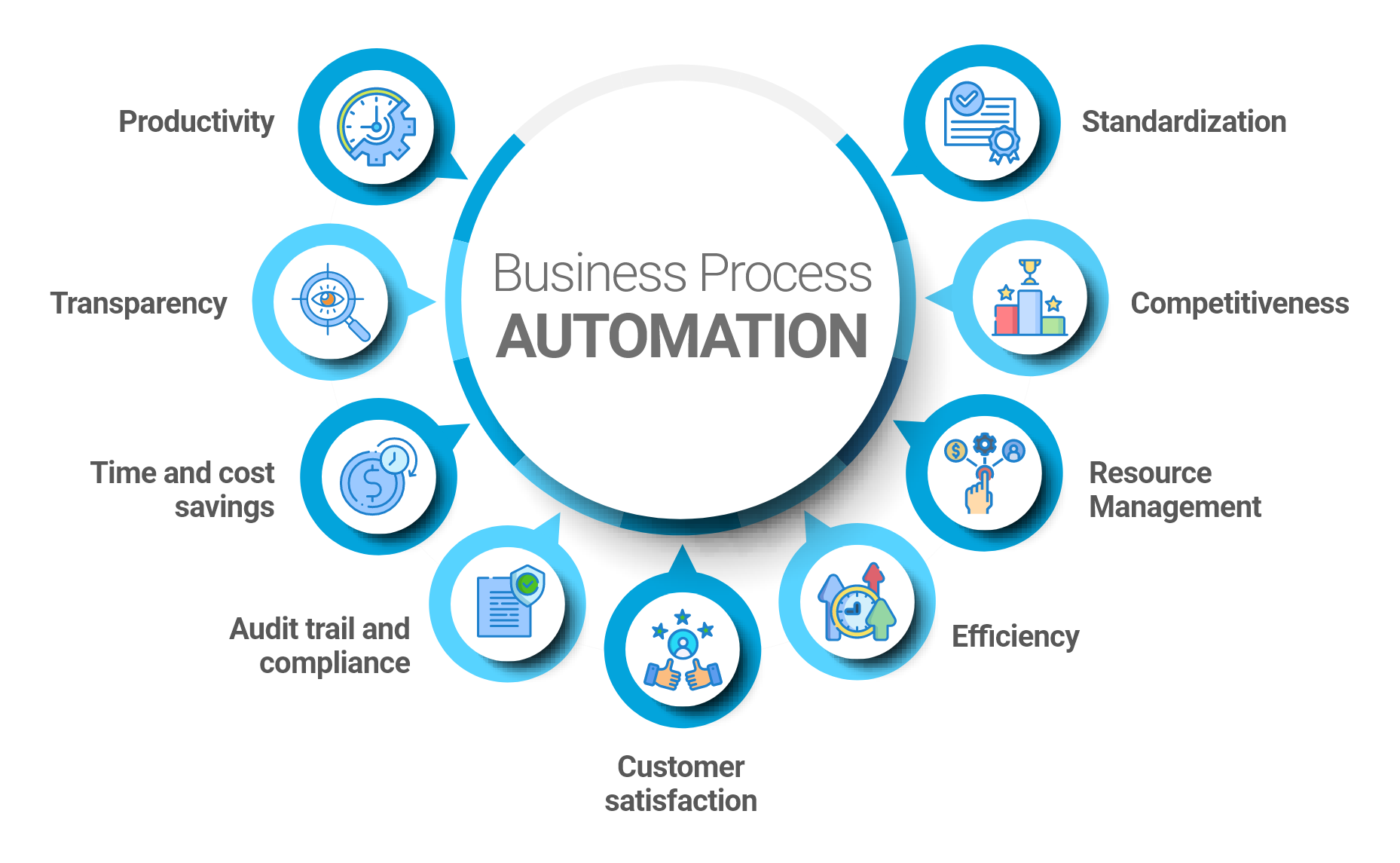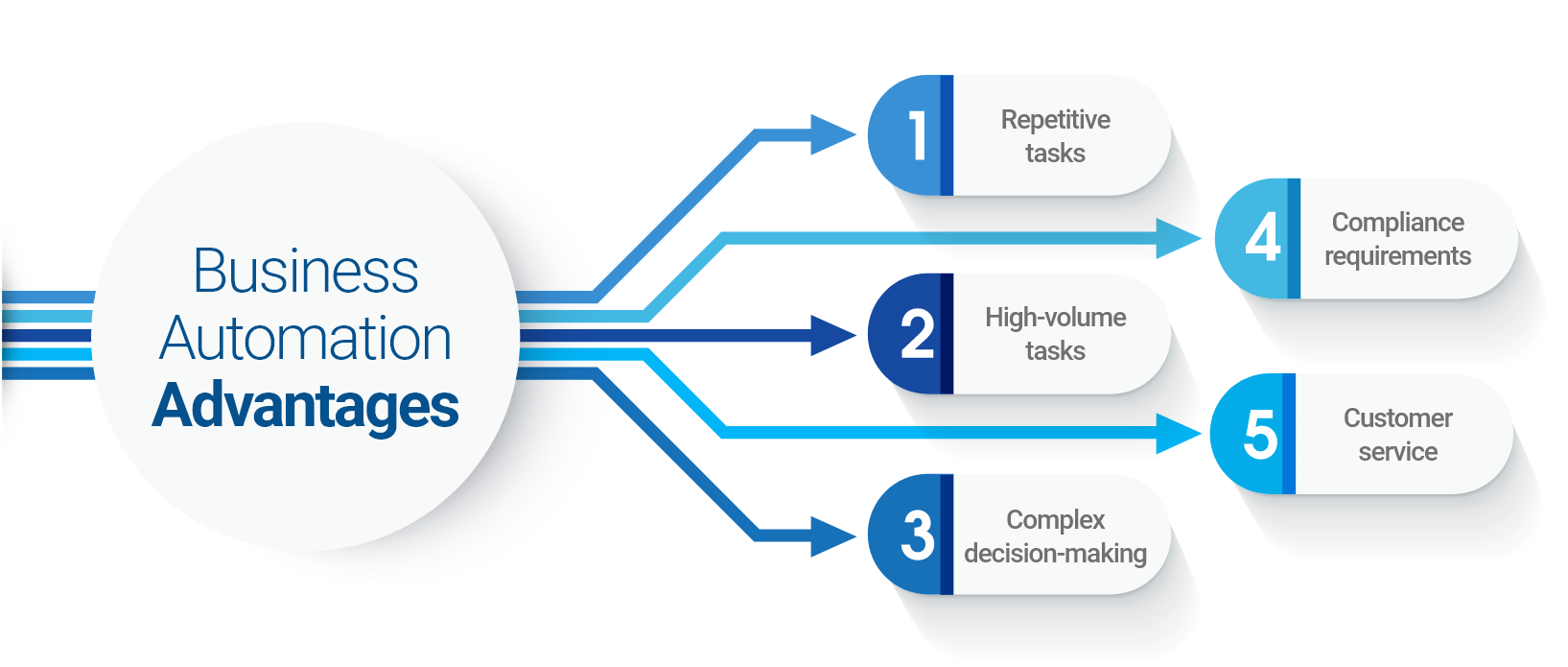5 Strategic Ways to Automate Business Processes: Guide to Business Process Automation
- Featured Insights
- May 12, 2023
What Is Business Process Automation?
Business Process Automation (BPA) uses technology to automate and streamline business processes. These processes are repetitive, manual, time-consuming, and error-prone tasks. BPA involves identifying such processes and then using software, systems, and other tools to automate those processes. This results in freeing up the employees to focus on critical tasks. To sum it up, BPA aims to improve efficiency, reduce costs, and minimize errors.
BPA applies to a wide range of business processes, including financial operations, customer service, supply chain management, human resources, and more. BPA can be achieved through tools that include but are not limited to, Robotic Process Automation (RPA), artificial intelligence (AI), machine learning, and other software applications that can automate routine tasks and decision-making processes.

Where Can Business Process Automation Be Used?
BPA is best used when an organization faces repetitive, time-consuming, and error-prone business processes. These processes are prime candidates for automation as they can often be performed more efficiently and accurately by machines than humans. Some specific situations where BPA may be useful include:
- Repetitive tasks: If a process involves doing the same thing repeatedly, such as data entry or filling out forms, it’s a good candidate for automation.
- High-volume tasks: Processes that involve handling large volumes of data or transactions, such as order processing or invoicing, can be automated to improve efficiency and reduce errors.
- Complex decision-making: BPA can be useful when complex decision-making is required, such as in financial analysis or risk management. AI and machine learning algorithms can be used to automate these types of decisions.
- Compliance requirements: Organizations that need to comply with strict regulations or standards may find that BPA can help them ensure compliance and reduce the risk of errors or non-compliance.
- Customer service: BPA can be used to automate customer service processes, such as responding to inquiries or processing orders, to improve response times and reduce errors.
Strategic Ways To Automate Business Processes:
When implementing Business Process Automation (BPA), it’s crucial to take a strategic approach to identify the best ways to automate business processes. Here are five strategic ways to automate business processes and make them a success:
- Identify key processes: The first step is to identify the key processes that have the greatest impact on your organization’s efficiency, productivity, and customer satisfaction. Organizations should prioritize processes that can benefit the most from automation and provide the highest return on investment.
- Select the right tools: Choose the right tools for the job based on your specific needs and requirements. This may involve selecting a Robotic Process Automation (RPA) software that can automate multiple processes or integrating different tools to automate specific tasks.
- Create a roadmap: Organizations should develop a roadmap for automation, outlining the processes to be automated, the timeline for implementation, and the expected outcomes. The roadmap should also include a plan for training employees and managing potential resistance to change.
- Test and refine: Before rolling out automation across the organization, testing and refining the automation processes is essential. It can help identify potential issues or errors and allow for adjustments before going live.
- Monitor and optimize: Once automation has been implemented, organizations should continuously monitor the processes and performance to ensure they meet their objectives. Optimize the workflow based on feedback and data analysis to improve efficiency and performance.
Advantages Of Automating Business Processes:
The key benefits that one can think of off the top of their head are minimal errors, reduced costs, and saved time. Several other advantages of BPA can benefit organizations. These include:
- Improved efficiency: BPA can help organizations automate routine and repetitive tasks, resulting in faster processing times, increased productivity, and lower labor costs.
- Increased consistency: BPA ensures that processes are performed consistently and according to predefined rules and standards. This can improve the quality of outputs and reduce the risk of errors.
- Enhanced visibility: BPA provides organizations with greater visibility into their processes, allowing them to identify inefficiencies, bottlenecks, and areas for improvement.
- Better compliance: BPA can help organizations ensure compliance with regulations and standards by automating processes and implementing controls to prevent errors and deviations.
- Improved customer experience: BPA can help organizations respond to customer inquiries and requests more quickly and accurately, leading to higher customer satisfaction.
